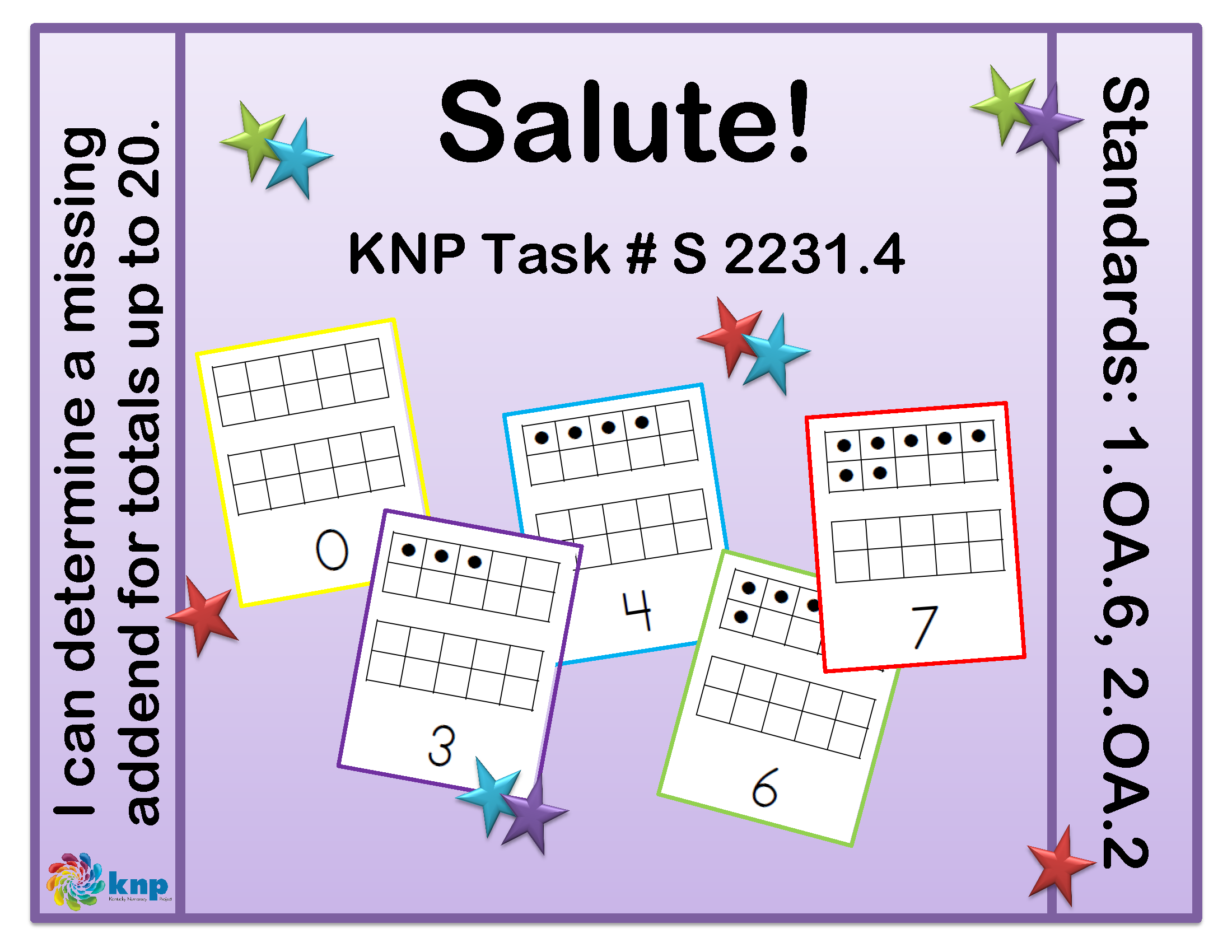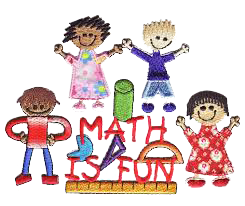“Salute!”
KNPIG ID #S 2231.4
What's this activity about?
This fun activity is made for groups of three. You will be using mental math strategies to find sums and differences while play acting the part of sergeant and soldiers. This activity is loads of fun and sure to bring your troops to the table.
What materials do we need?
Printable double 10 frame cards at least 2 each of 0 to 15 (see link).

How do we play?
- Decide who will be the two soldiers and who will be the sergeant.
- Divide the deck into 2 equal piles and place a pile by each soldier.
- When the sergeant says “Salute!” each soldier will take a card from their pile and place it on their forehead, as if saluting each other. The sergeant needs to make sure that each soldier can only see his partner’s card and not his own.
- The sergeant calls out the sum of the two numbers.
- Each soldier uses the sum to figure out what number is on their card, announces it to the sergeant and gets a point for each correct answer.
- When the cards have all been used, mix the cards up and switch jobs.
Where’s the Math?
There is a lot of math in this game that goes along with what kids are learning in school. Second graders are practicing finding missing addends for totals up to twenty. They are looking at larger numbers and break them down to smaller numbers. This game helps them develop their own mental math strategies, such as grouping, counting on, or recognizing patterns.
Your child follows developmental stages when learning how to read, from the introduction of letter sounds, then how those sounds fit together to form simple words and how words fit together to form sentences before they are fluent readers. Just like learning how to read, learning how quantities relate to each other before learning the math “facts” supports developmental learning paths and will help them learn more easily as they move forward.
Things to Think About:
As you play this with kids, remember to BE PATIENT. Sometimes it’s hard not to help them along if they are struggling. Giving children time to think will help them develop more critical thinking skills and deeper understanding. Instead of telling them the answer, encourage them to use different mental math strategies to figure out the answer. There are many different ways to get to the correct answer, you and your child can figure out what method they are most comfortable using.
This is also a good opportunity to talk about making addition and subtraction number sentences. If they figure out their number is three when you give them the clue seven, you could ask “What does that sound or look like as a number sentence? Start with three, and then add seven. That equals 10. 3+7=10.” You could also write it as a subtraction sentence. This shows them different ways quantities relate to one another. Having a better understanding of quantities now will make math further in their education easier to understand.
Feedback
Send us your thoughts and ideas about these activities. Email the KCM

